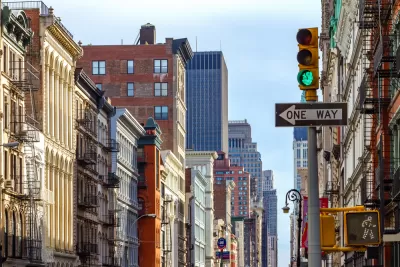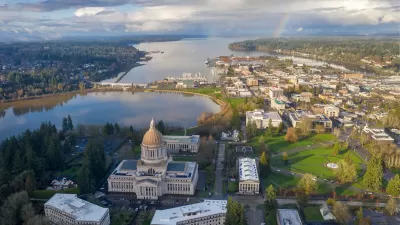The court ruled against landlords challenging the city’s rent stabilization laws as unconstitutional. The landlords plan to take their case to the Supreme Court.

A federal appeals court sided with New York City tenants in two cases that jeopardized rent stabilization rules enacted in 2019, reports Mike Leonard in Bloomberg Law. “The US Court of Appeals for the Second Circuit upheld amendments to the New York City Rent Stabilization Law, saying they complied with due process and the takings clause of the Fifth Amendment, which requires the government to pay fair market value when it seizes property for a public purpose.”
Judge Barrington D. Parker acknowledged the argument made by many economists that rent control laws are inefficient at achieving their goals, but wrote that “the caselaw is exceptionally clear that legislatures enjoy broad authority to regulate land use.” The judge rejected arguments that a rent control law constitutes a physical or regulatory taking. “He also rejected the due process claims, saying rent stabilization rules—whether wise or not—have a direct link to the concerns lawmakers were seeking to address, such as homelessness, transience, and the displacement of low-income residents, including essential workers.”
The landlord groups involved in the case plan to take it to the Supreme Court, saying through a spokesperson, “We always expected these issues to be decided by the Supreme Court and look forward to moving the case forward.”
FULL STORY: NYC Rent Stabilization Rules Beat Challenges by Landlords

Manufactured Crisis: Losing the Nation’s Largest Source of Unsubsidized Affordable Housing
Manufactured housing communities have long been an affordable housing option for millions of people living in the U.S., but that affordability is disappearing rapidly. How did we get here?

Americans May Be Stuck — But Why?
Americans are moving a lot less than they once did, and that is a problem. While Yoni Applebaum, in his highly-publicized article Stuck, gets the reasons badly wrong, it's still important to ask: why are we moving so much less than before?

Using Old Oil and Gas Wells for Green Energy Storage
Penn State researchers have found that repurposing abandoned oil and gas wells for geothermal-assisted compressed-air energy storage can boost efficiency, reduce environmental risks, and support clean energy and job transitions.

California's Canal Solar Projects Aim to Conserve Resources and Expand Clean Energy
California’s Project Nexus has begun generating electricity from solar panels installed over irrigation canals, with researchers and state agencies exploring statewide expansion to conserve water and boost clean energy production.

HHS Staff Cuts Gut Energy Assistance Program
The full staff of a federal program that distributes heating and cooling assistance for low-income families was laid off, jeopardizing the program’s operations.

San Antonio Remains Affordable as City Grows
The city’s active efforts to keep housing costs down through housing reforms and coordinated efforts among city agencies and developers have kept it one of the most affordable in the nation despite its rapid population growth.
Urban Design for Planners 1: Software Tools
This six-course series explores essential urban design concepts using open source software and equips planners with the tools they need to participate fully in the urban design process.
Planning for Universal Design
Learn the tools for implementing Universal Design in planning regulations.
Heyer Gruel & Associates PA
City of Moreno Valley
Institute for Housing and Urban Development Studies (IHS)
City of Grandview
Harvard GSD Executive Education
Salt Lake City
NYU Wagner Graduate School of Public Service
City of Cambridge, Maryland





























